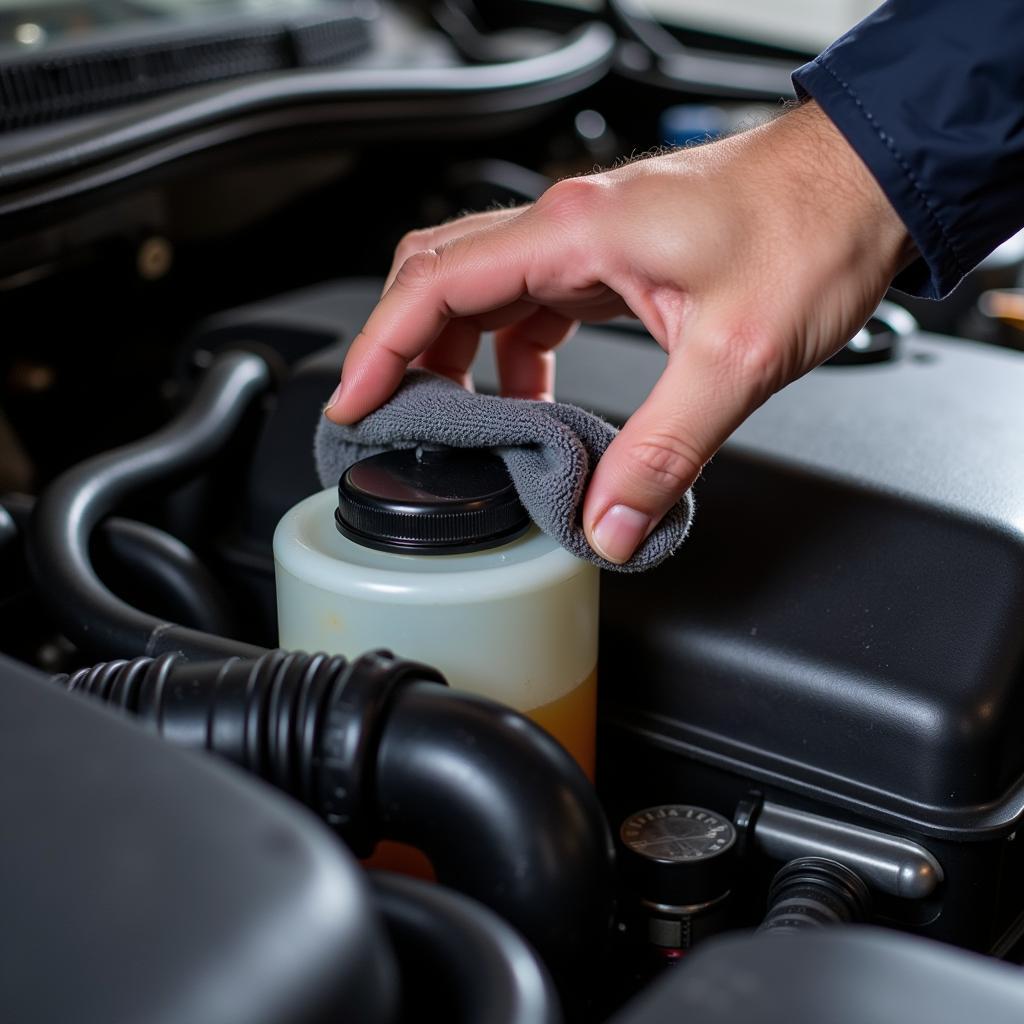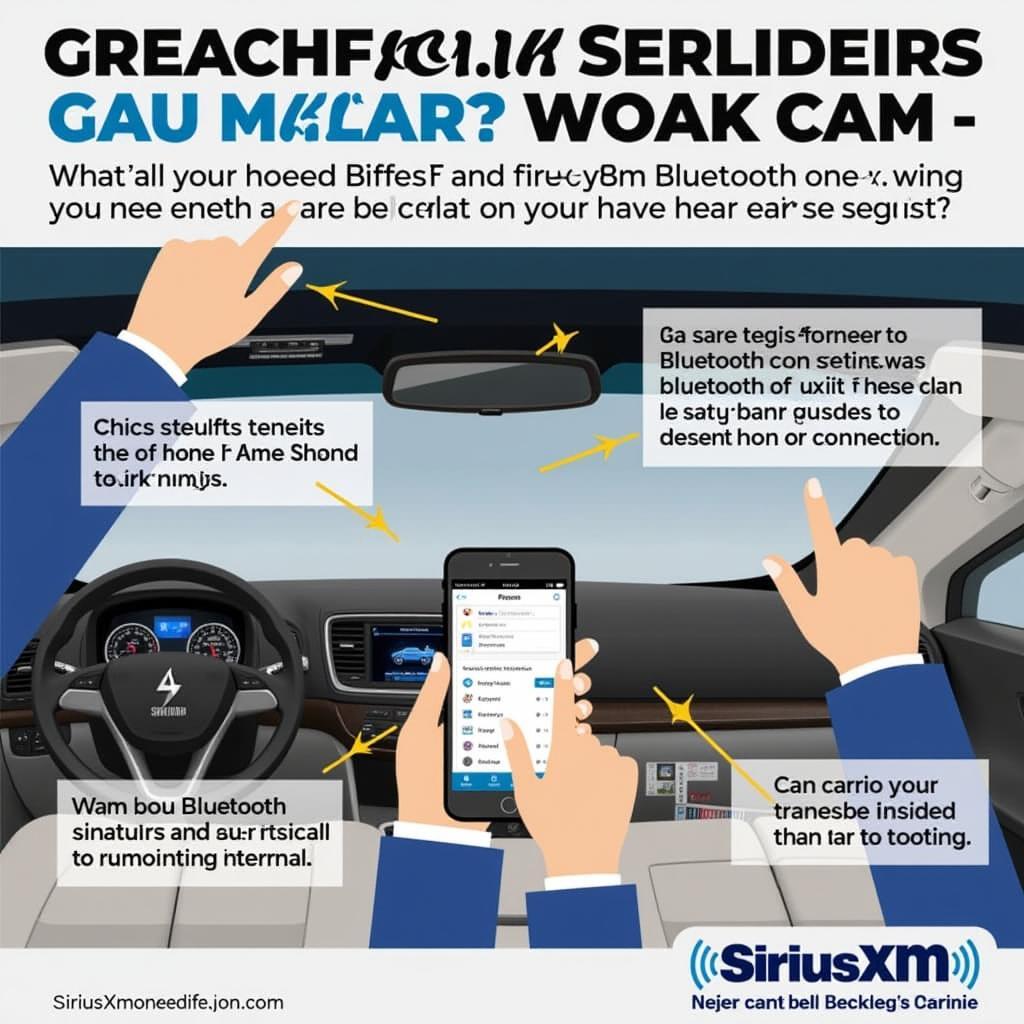The sudden illumination of an “emergency brake hazard warning” light on your dashboard can be unnerving. This warning typically signals a malfunction within your vehicle’s braking system, potentially indicating a serious safety concern. This comprehensive guide delves into the common causes of emergency brake hazard warnings, potential risks, and practical solutions to address this issue effectively.
Deciphering the Emergency Brake Hazard Warning
The emergency brake hazard warning, often accompanied by a red exclamation mark symbol or the word “BRAKE,” indicates a problem within your braking system. Unlike a typical parking brake light that signals engagement, this warning signifies a fault that requires immediate attention.
Common Causes of Emergency Brake Hazard Warnings
Several factors can trigger an emergency brake hazard warning light:
- Low Brake Fluid: Brake fluid is the lifeblood of your braking system, transmitting force to engage the brakes. A low fluid level, often caused by leaks or worn brake pads, can hinder proper braking performance.
- Faulty Brake Sensor: Modern vehicles utilize sensors to monitor brake fluid levels, brake pad wear, and other critical parameters. A malfunctioning sensor can send erroneous signals, triggering the warning light.
- Worn Brake Pads: As brake pads wear down over time, the brake caliper pistons extend further to compensate. This can trigger a sensor indicating low brake fluid or a fault in the system.
- ABS Issues: The Anti-lock Braking System (ABS) prevents wheel lockup during hard braking. Problems within the ABS module or wheel speed sensors can illuminate the emergency brake hazard warning.
- Electrical Malfunctions: Wiring issues, corroded connections, or a faulty brake light switch can disrupt the electrical signals within the braking system, causing the warning light to appear.
Potential Risks of Ignoring the Warning
Ignoring an emergency brake hazard warning can lead to dangerous situations:
- Reduced Braking Performance: A malfunctioning braking system can significantly reduce your ability to stop the vehicle safely, increasing the risk of accidents.
- Complete Brake Failure: In extreme cases, ignoring the warning can lead to complete brake failure, rendering your vehicle uncontrollable.
- Increased Stopping Distance: Even with reduced braking performance, your vehicle will require a longer distance to come to a complete stop, increasing the likelihood of collisions.
 Checking Brake Fluid Level
Checking Brake Fluid Level
Troubleshooting and Solutions
If your emergency brake hazard warning light illuminates, take the following steps:
- Check Brake Fluid Level: Safely park your vehicle and refer to your owner’s manual to locate the brake fluid reservoir. Inspect the fluid level, ensuring it falls within the minimum and maximum markings.
- Inspect Brake Pads: Visually examine your brake pads through the wheel spokes. If you notice significant wear or if the pads appear thinner than ¼ inch, it’s time for a replacement.
- Consult a Qualified Mechanic: For further diagnosis and repair, it’s crucial to consult a qualified mechanic specializing in automotive electrical and braking systems. They have the expertise and tools to pinpoint and rectify the underlying issue.
Remote Diagnostics and Software Solutions
In some instances, the emergency brake hazard warning may stem from software glitches or sensor calibration issues. Remote diagnostics and software solutions offered by specialized automotive technicians can provide effective solutions:
- Remote Scanning: Technicians can remotely connect to your vehicle’s onboard computer system to retrieve diagnostic trouble codes, providing insights into the root cause of the warning.
- Software Updates and Reprogramming: Outdated software or calibration issues within the braking system can be addressed through remote software updates and reprogramming, restoring optimal functionality.
- Remote Sensor Calibration: Certain brake sensors, such as wheel speed sensors, may require calibration. Remote diagnostics allow technicians to perform these calibrations without physical access to the vehicle.
“Remote diagnostics and software solutions are revolutionizing the way we diagnose and repair modern vehicles,” says Emily Carter, a lead automotive electrical systems engineer at a leading car manufacturer. “These advancements allow us to address a wide range of issues, including those related to braking systems, more efficiently and effectively.”
Preventive Measures
Preventing emergency brake hazard warnings involves proactive maintenance:
- Regular Brake Inspections: Adhere to your vehicle manufacturer’s recommended brake inspection intervals.
- Timely Brake Fluid Flush: Brake fluid should be flushed and replaced according to your owner’s manual guidelines, typically every 2-3 years.
- Address Warning Lights Promptly: Never ignore any warning lights on your dashboard, especially those related to your braking system.
Conclusion
The emergency brake hazard warning is a critical safety indicator that should never be ignored. Understanding the common causes, potential risks, and solutions empowers car owners to address this issue promptly, ensuring the safety of themselves and others on the road. Remember, regular maintenance, timely inspections, and prompt attention to warning signs are crucial for optimal braking performance and overall vehicle safety.
Frequently Asked Questions
Q: Can I drive my car with the emergency brake hazard warning light on?
A: It is not recommended to drive your car with the emergency brake hazard warning light on. This warning indicates a potential issue with your braking system that could compromise your safety.
Q: How much does it cost to fix an emergency brake hazard warning?
A: The cost of repair can vary widely depending on the underlying cause. A simple brake fluid top-up may cost a few dollars, while replacing faulty ABS components can cost significantly more.
Q: How often should I check my brake fluid level?
A: It’s a good practice to check your brake fluid level at least once a month and before any long trips.
Q: Can a bad battery cause the emergency brake hazard warning light to come on?
A: While rare, a severely discharged or faulty battery can sometimes cause erratic behavior in vehicle electrical systems, potentially triggering warning lights.
Q: Is it safe to add brake fluid myself?
A: While it is possible to add brake fluid yourself, it’s crucial to use the correct type of brake fluid specified in your owner’s manual and avoid spills. If you’re unsure, consult a qualified mechanic.

